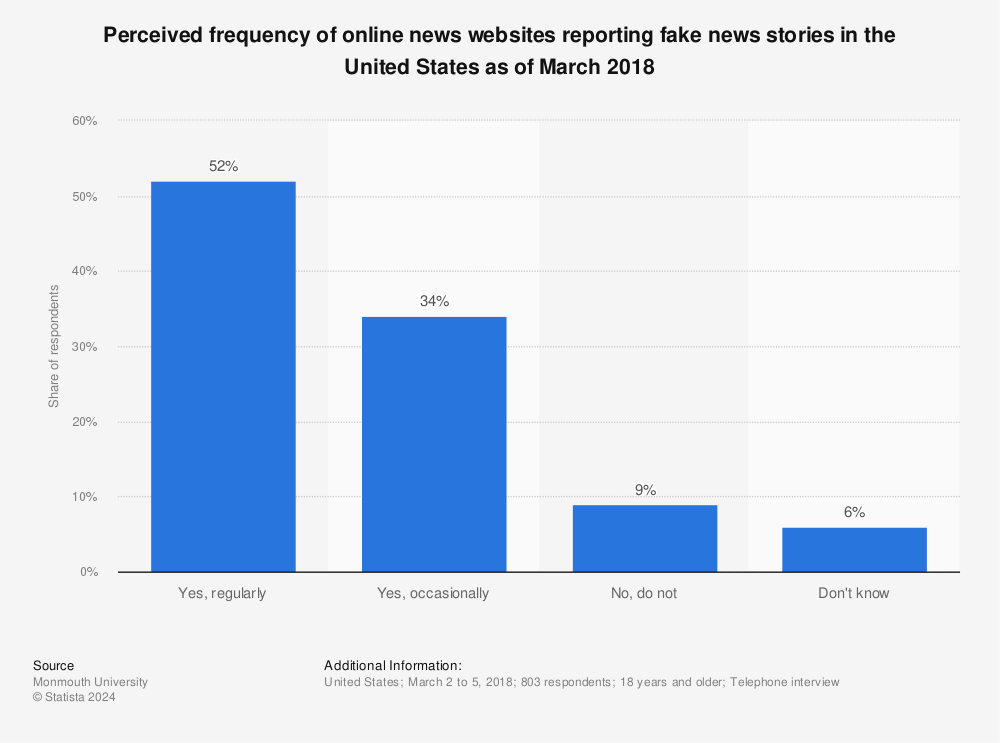
Social media makes it dangerously easy to create and quickly spread misinformation all over the world. Stories and content designed to get attention and sway opinions may come from people you know, Internet "trolls" disguised as real people or organizations you normally trust, users posting anonymously, or automated bots set out to create havoc.
Unfortunately, it's not really in the best interest of social media companies to limit the spread of fake news stories; it attracts attention and strong feelings, therefore bringing more views to a platform. More engagement basically translates to more revenue, and moderating the millions of stories posted every second is also an incredibly difficult task that social media platforms are still trying to develop.
Sources: "Fake News on Social Media," Gale Opposing Viewpoints in Context.
“Serious queries” and “editorial epistemologies”: How social media are contending with misinformation,"
from The Propagation of Misinformation in Social Media: A Cross-platform Analysis, 2023.

Fake news stories abound on Meta platforms; one of which is mostly known by its former name Facebook, and Instagram. A 2022 Pew Research Center survey found that Facebook was the top social media site where adults would get their news. Many posts come from scammers looking to make money on the number of clicks these stories receive. Other users, however, have more nefarious purposes planned with their posts. Meta declares that aside from policies like encouraging the reporting of potential misinformation and partnering with authoritative public agencies, they use both technology and a large team of reviewers to help stop misinformation and other potentially harmful or unwanted content before it's out in the open.
"X," formerly known as Twitter, mentions that they remove or limit "misleading content" if the potential for it to create a dangerous situation is very high. "Prebunks" are also said to be put in place before significant or critical events to provide users with facts before misinformation fills their feeds; reminders for users to be cautious of an influx of false statements.

TikTok is regularly mentioned in the fight against fake news, if not privacy concerns. Newsguard, a group that analyzes misinformation online, conducted a brief investigation of misinformation during the COVID-19 pandemic and found that about 90 percent of their participants—all children under 18—were presented COVID-19 misinformation posts within their first 35 minutes of signing up for the platform.




Basic deepfake technology is quite easy to access and use; most of us can simply whip out our smartphones and use apps to swap our faces with those of historical figures or our pets. While amusing, the fear of very sophisticated deepfakes being used to damage private and public lives and commit a multitude of crimes has even led to legislation to curb malicious deepfake applications. More is being done to develop technology that will recognize deepfakes and stop them before they cause harm; in the meantime, if a media source is too "good" to be true, treat it like any other piece of potential fake news fact check!
Sources/Further Reading:
Nearly half of readers report that they see fake news stories on their social media at least once a day. That's a lot of exposure to fake news!
